History of Iceland's forests for kids Q&A about what happened to the trees in Iceland
 The Icelandic Forest Service received a kind request from an American children's news source called News-O-Matic to answer a few questions about Iceland's forests, what happened to them, and the work being done to replant trees. We are happy to present here some kid-friendly answers to these questions in hope that they will shed some light on the matter.
The Icelandic Forest Service received a kind request from an American children's news source called News-O-Matic to answer a few questions about Iceland's forests, what happened to them, and the work being done to replant trees. We are happy to present here some kid-friendly answers to these questions in hope that they will shed some light on the matter.
Question 1. What happened to the trees in Iceland?
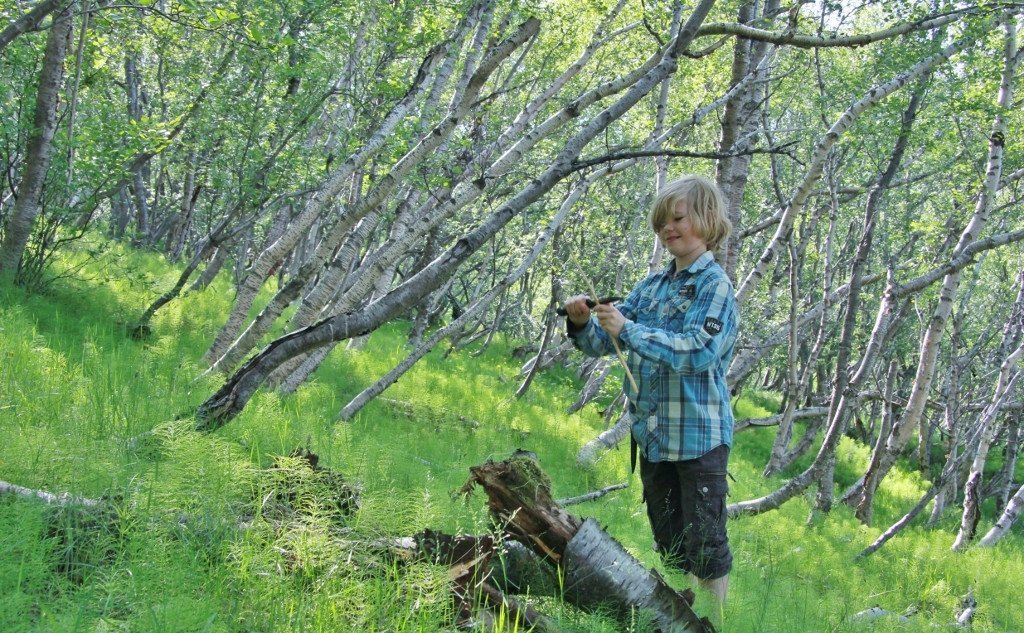 Answer: When people first settled in Iceland around 1150 years ago, they brought sheep, cattle, pigs and horses with them. They needed pastures for the livestock so the forests were cut down and converted to grassland. Over the next several hundred years, more and more forests were converted to pastures, until almost all of the trees were gone.
Answer: When people first settled in Iceland around 1150 years ago, they brought sheep, cattle, pigs and horses with them. They needed pastures for the livestock so the forests were cut down and converted to grassland. Over the next several hundred years, more and more forests were converted to pastures, until almost all of the trees were gone.
This has happened at one time or another in almost all places where people live, all over the world. It is called forest clearance for agriculture and it is going on now in places like Brazil.
The case of Iceland is especially bad because the forests had only one tree species, birch, which sheep and cattle like to eat. So the trees were not able to grow back after they were cut down because the sheep and cattle ate the seedlings.
Question 2. Why is it important to replant trees? / How can the trees help Iceland?
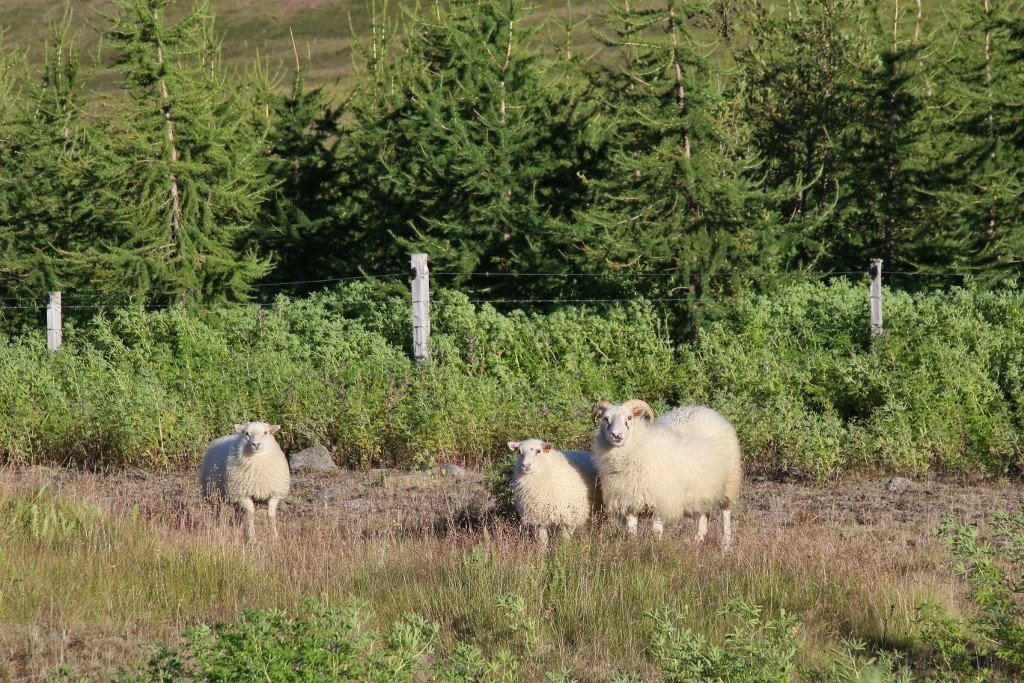 Answer: One of the main problems caused by cutting down the forests in Iceland, followed by extensive sheep grazing, is soil erosion. The low vegetation that grew after the forests were gone was not able to protect the soil from wind and water erosion. The soil blew away leaving only the gravel, called glacial till, that the glaciers left when they retreated at the end of the last ice age about 10,000 years ago.
Answer: One of the main problems caused by cutting down the forests in Iceland, followed by extensive sheep grazing, is soil erosion. The low vegetation that grew after the forests were gone was not able to protect the soil from wind and water erosion. The soil blew away leaving only the gravel, called glacial till, that the glaciers left when they retreated at the end of the last ice age about 10,000 years ago.
Eroding areas tend to get bigger and bigger, continuing to erode the vegetated areas around their edges. It is important to stop the erosion in order to save the soil and vegetation that is left. Planting trees is the best way to do that.
Another important reason for planting trees is that people use a lot of wood and wood products, such as fuel for heating and cooking, lumber for building houses, paper and a great many other things. The screens of our phones, pads, laptops and TVs even have wood fibers in them to keep them from simply being mirrors. Icelanders use just as much wood as other people, but it all has to be imported from other countries where they have forests. Producing at least a part of the forest products we use in Iceland will both save money and reduce CO2 released in transporting those goods long distances.
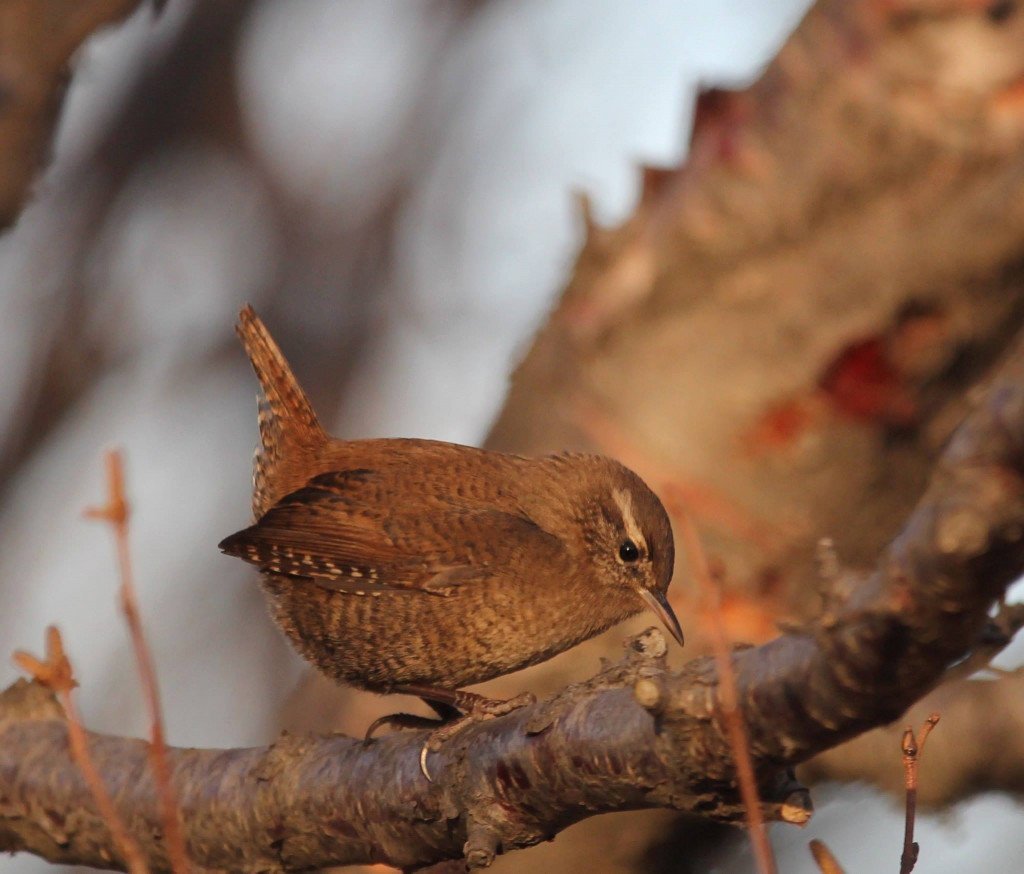 A third important reason to plant trees is to rebuild the forests for the many plants and animals that live in them. Forest birds such as wrens and redpolls are uncommon in Iceland because forests are uncommon. The same goes for many other plant and animal species. Increasing forest cover is good for biodiversity.
A third important reason to plant trees is to rebuild the forests for the many plants and animals that live in them. Forest birds such as wrens and redpolls are uncommon in Iceland because forests are uncommon. The same goes for many other plant and animal species. Increasing forest cover is good for biodiversity.
A forth reason for planting trees is to create sheltered areas for people. Forests for outdoor recreation are important and much used, especially around cities and towns.
Finally, planting trees to increase forest area is the best way to remove CO 2 from the atmosphere in order to try to slow down global warming. The trees breath in CO2 and turn it into wood in their stems and roots and keep it there for a long time. Carbon sequestration has become one of the most important reasons for protecting the forests that we have, using them sustainably and planting more.
Question 3. Has there been (or will there be) a significant increase in trees? Why or why not?
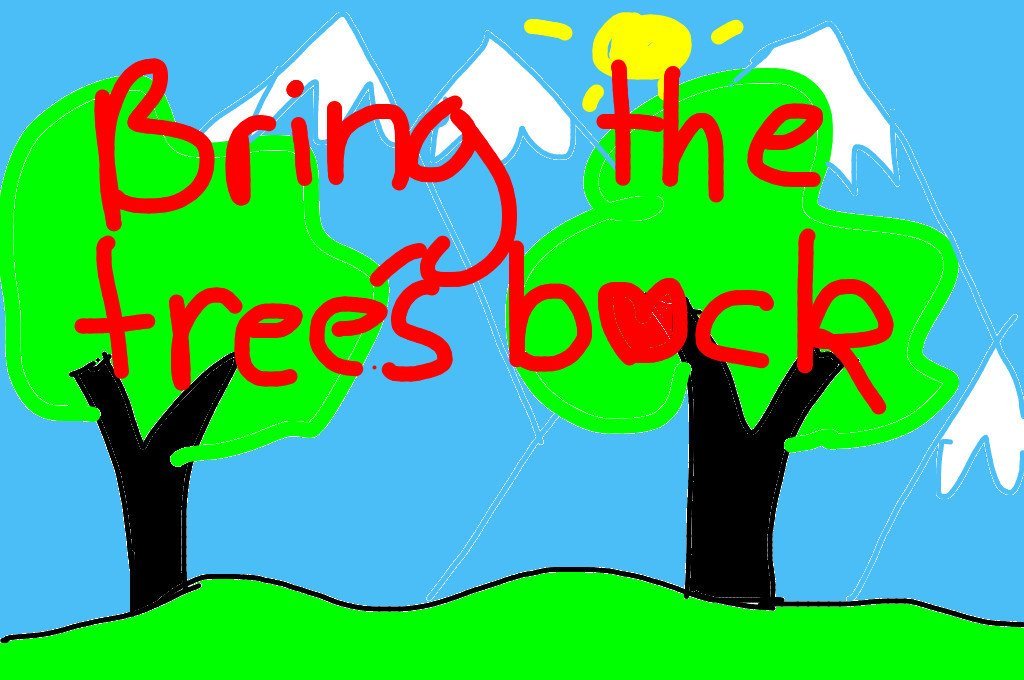 Answer: We have been planting trees in Iceland since around 1950. The number of seedlings planted each year soon reached about 1 million and remained similar until 1990, when it started to increase. The maximum was reached in 2008, when about 6 million seedlings were planted. Since then, planting has declined and is now about 2.5 million seedlings per year.
Answer: We have been planting trees in Iceland since around 1950. The number of seedlings planted each year soon reached about 1 million and remained similar until 1990, when it started to increase. The maximum was reached in 2008, when about 6 million seedlings were planted. Since then, planting has declined and is now about 2.5 million seedlings per year.
It takes about 3000 seedlings to plant a hectare of forest (about 1200 seedlings per acre) so 6 million seedlings represents 2000 hectares (a little less than 5000 acres) of forest. Whether these are small or large numbers depends on what you compare them with. They are certainly small compared to the size of Iceland. Since 1950, we have planted about 50,000 hectares, which is only 0.5% of Iceland´s land area. If you compare it to Iceland´s population (now about 340,000 people), it means that we have planted a hectare of forest for every 7 Icelanders living today. That is a greater amount of planting per person than in most countries.
 Growing seedlings and planting them is expensive. The people have to pay for it, through the government. Forestry after all is a good investment in the future for society as a whole. But governments change and support for forestry has been up and down over the years. Now it is down and we are planting much less than we could be doing.
Growing seedlings and planting them is expensive. The people have to pay for it, through the government. Forestry after all is a good investment in the future for society as a whole. But governments change and support for forestry has been up and down over the years. Now it is down and we are planting much less than we could be doing.
Another issue is natural spreading of birchwoods. The natural birch woodlands were not completely wiped out, just almost, from covering about 30% of Iceland at the time of settlement, down to less than 1% cover in 1950.
Most of Iceland is still used for grazing sheep, which prevents natural spreading of forests and woodlands. But Iceland, like other parts of the world, is becoming ever more urbanized with people moving from rural areas to cities and towns. Some parts of Iceland have become depopulated in recent decades and land use in other areas has changed from sheep farming to other forms of agriculture. In those areas, we now see that woodlands are spreading. Birch woodland now covers is now about 1.5% of Iceland.
In all, cultivated and natural forest and woodlands now cover slightly less than 2% of Iceland. That represents at least a doubling of area since 1950 but is still not much compared to most other countries and very little compared to what it could be.
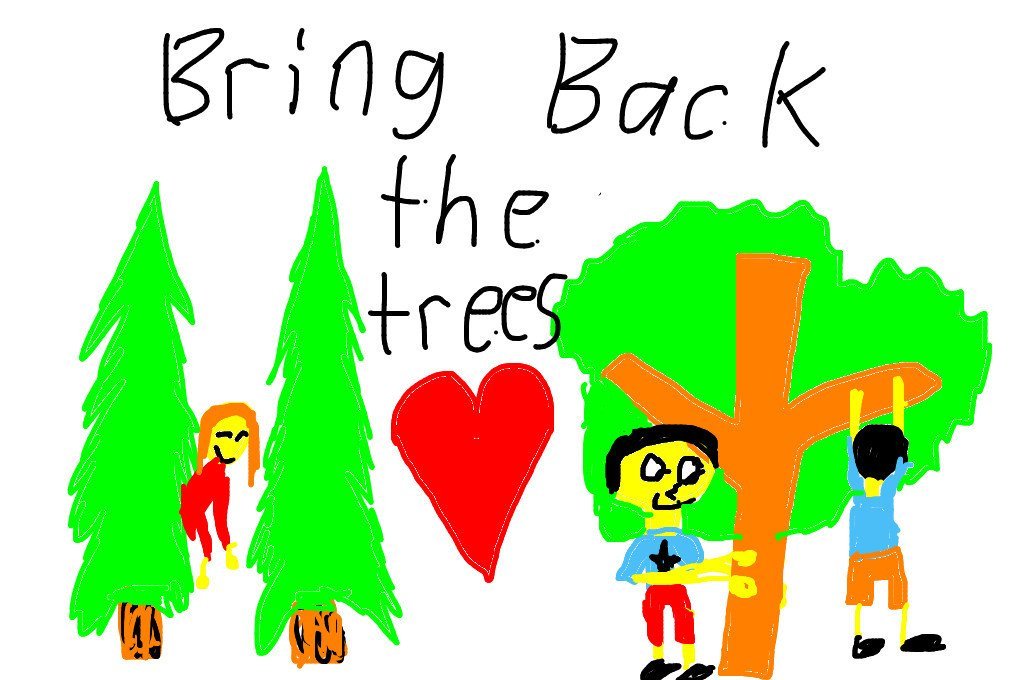 Most of Iceland will likely continue to be used as grazing land for sheep in the near future, which means that natural spreading of forest will not be rapid. Planting will continue to be expensive, which means that afforestation by planting will also be limited in area. Forest area will continue to increase but not as fast as some of us would like.
Most of Iceland will likely continue to be used as grazing land for sheep in the near future, which means that natural spreading of forest will not be rapid. Planting will continue to be expensive, which means that afforestation by planting will also be limited in area. Forest area will continue to increase but not as fast as some of us would like.
Question 4. I read this on the Icelandic Forest Service website: “A century ago, most Icelanders had never even seen a tree…” is that true?
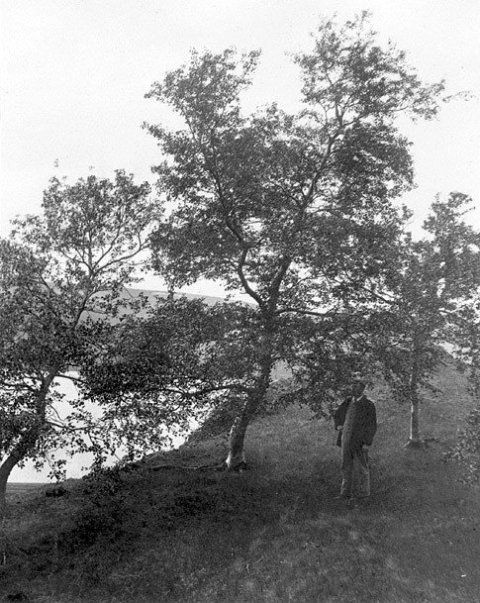 Answer: A century ago, most Icelanders lived on farms or in small fishing villages. Cars were still rare so most people didn't travel much, except maybe to the next farm or nearest town. Only a small proportion of Icelanders had the opportunity to travel abroad.
Answer: A century ago, most Icelanders lived on farms or in small fishing villages. Cars were still rare so most people didn't travel much, except maybe to the next farm or nearest town. Only a small proportion of Icelanders had the opportunity to travel abroad.
The practice of growing trees in peoples‘ yards or public parks had not yet caught on and there were only 3 sites with birch forest remnants big enough to be called small trees, two of them remote to most Icelanders and one nearly inaccessible.
On the right is a photo taken around 1910 at one of those sites, which at that time had recently become Iceland´s first National Forest. It probably shows the tallest tree in Iceland at the time.

